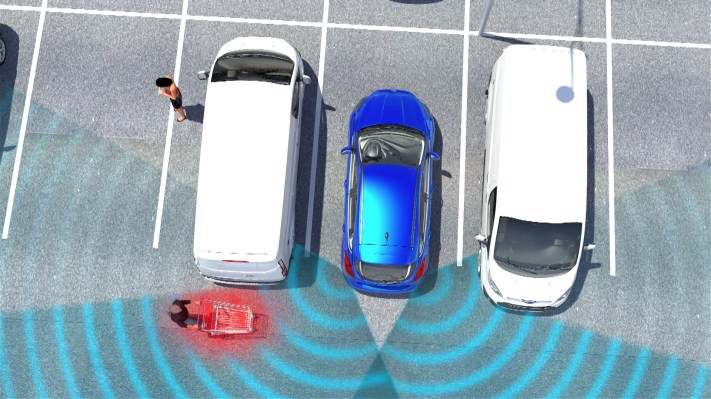Ford is detailing new features coming to its driver assist system, with a timeframe for arrival in new vehicles within the next two years. The new additions include the ability to detect people and objects on course to pass behind a vehicle, and auto-braking when in reverse if the driver fails to heed warnings about said objects; and another new feature will help human drivers with evasive steering when it’s the only option available to help avoid an accident.
Other new additions include a wide-angle rear camera for a more comprehensive look at what’s behind your car via the in-dash display, and a new parking assistant that can either parallel or perpendicular park (including backing into a spot, a maneuver which I avoid with gusto) with only a single button press required on the part of the driver.
Existing Ford vehicles already offer a range of driver assistance features, of course, including lane keeping and cruise assist, but these new features go beyond what’s already available.
The new features provide the vehicle much more control in case of situations where a driver might not be able to react in time to prevent an accident, going beyond the kind of assistive tech generally available today, which tends to be more about helpful nudging, than really assuming control.
[gallery ids="1411227,1411226,1411225,1411228"]
The new cross-traffic braking system will explicitly will act on behalf of the driver in their best interest if a warning goes ignored, actually braking the vehicle in response to a potential collision it predicts in the case of an object crossing a reversing vehicle’s path in situations where a driver couldn’t possibly see the oncoming obstacle.
Ford’s also going to introduce a tech called “evasive steering assist” which will help human drivers steer their cars around stopped or slower vehicles in front, in cases where braking won’t succeed in avoiding a collision and the driver instead attempts to steer around the obstacle. This makes a lot of sense, since drivers often tend to overcorrect in these instances when left to their own devices, leading to problems like ending up in a ditch beyond the shoulder or even rollovers.
The new features, which also include a new wrong way alert system that will provide both audio and visual warnings when a driver starts going the wrong way down a road, are being developed out of Ford’s Research and Innovation Center in Aachen, Germany, and will start seeing real-world road use in the next couple of years, as mentioned.
